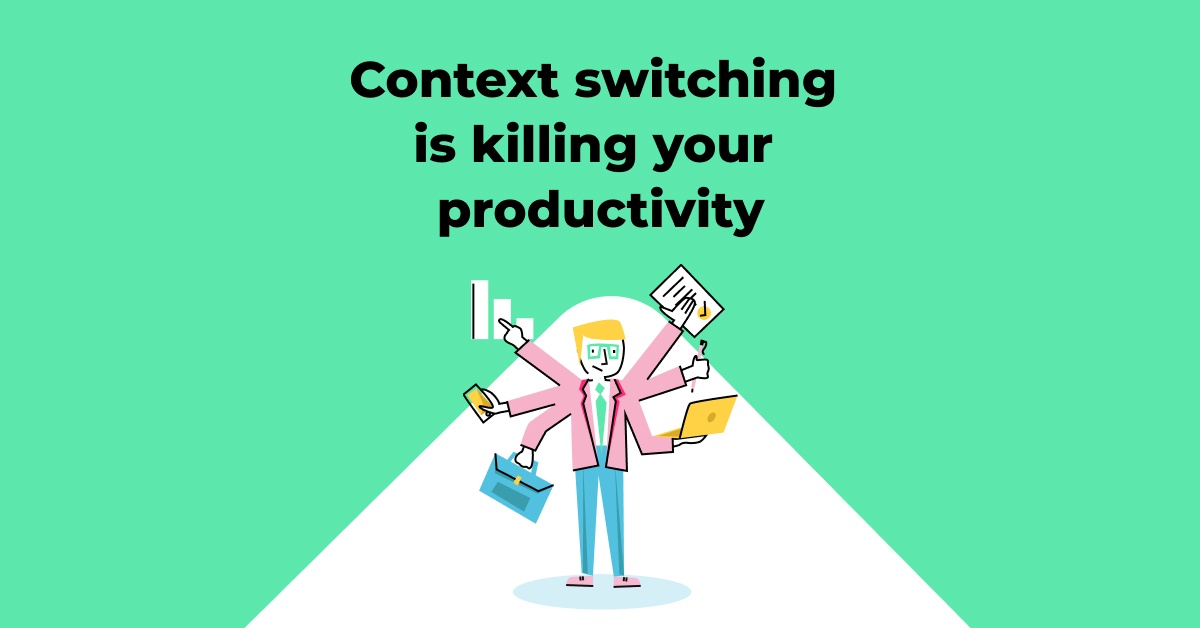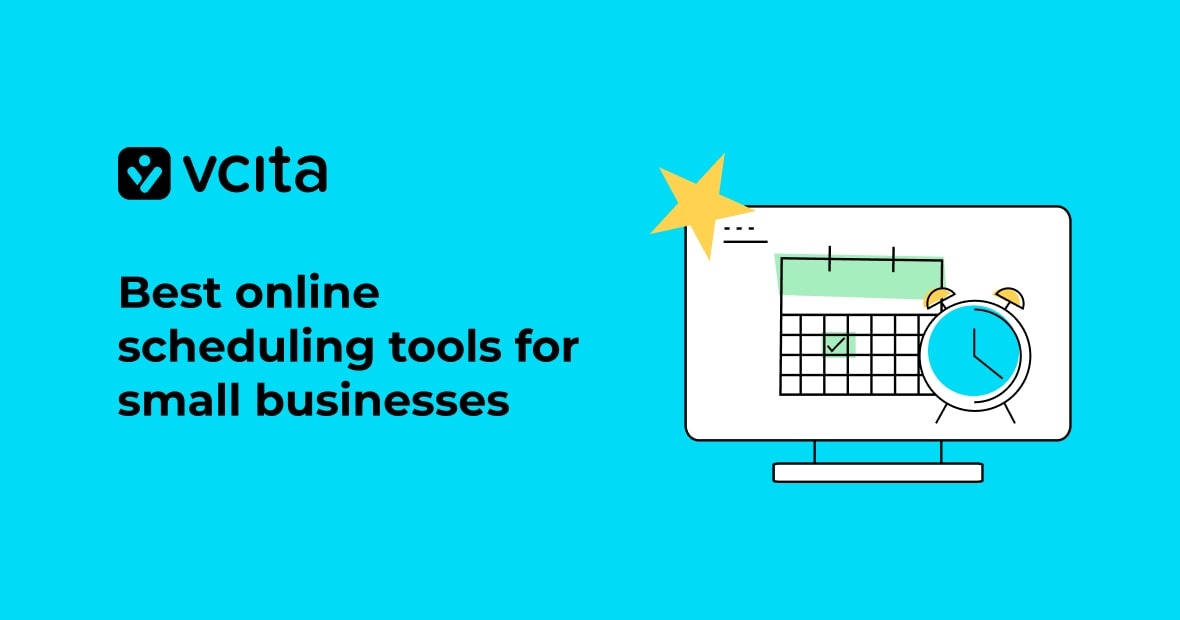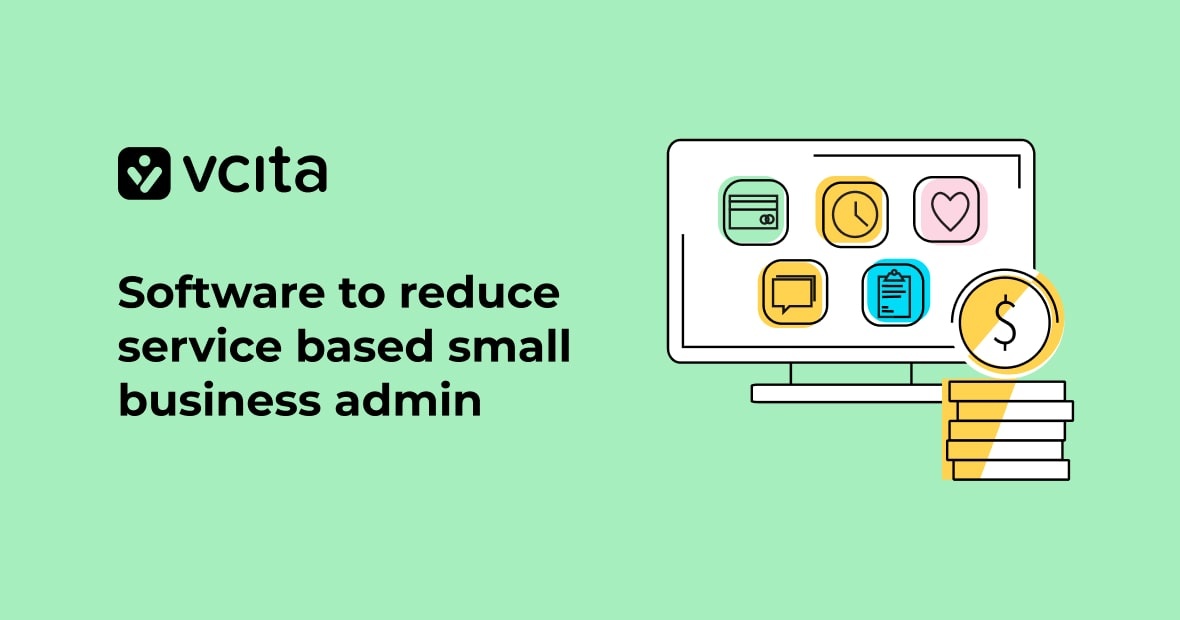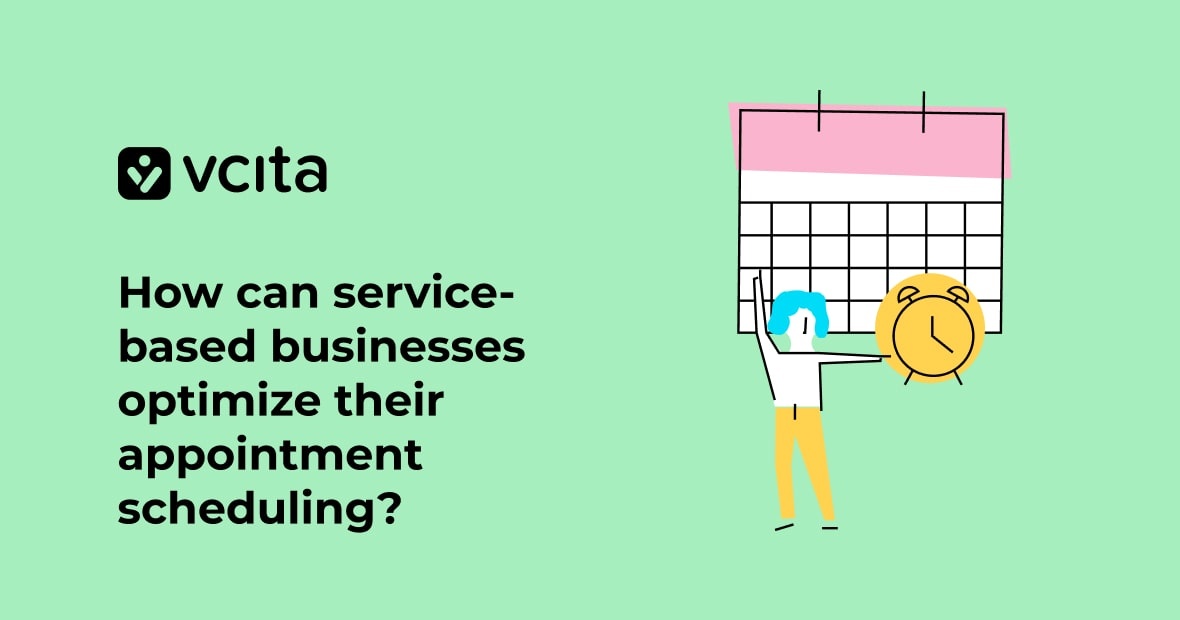Ever finish the work day only to feel like you barely got anything done at all? Between sending emails, tackling to-do lists, scheduling appointments, and balancing a million other tasks, you may feel like you’re chasing your own tail.
The good news is, it’s not (all) in your head. This constant shuffling between tasks is called context switching and it’s killing your productivity. Let’s discuss why.
- 🔄 Context switching involves quickly moving from one task to another, often due to urgent demands, without completing the previous task.
- 🤹 Multitasking, on the other hand, involves focusing on multiple tasks simultaneously, such as checking email during a meeting.
- 📉 Context switching can reduce productivity and result in increased stress and frustration.
- 📅 To combat context switching, prioritize tasks, focus on one task at a time, and schedule regular breaks.
- 🛠️ Use productivity tools to block distractions and consolidate apps for smoother workflow.
- 🎯 Setting realistic short-term and long-term goals can help with time management and task prioritization.
What is context switching?
The truth is we’re all guilty of context switching. Picture this: you start off your day by checking your email when you get a message to your phone. While you’re now reading that message, your calendar notifies you about a meeting that you need to prep for, so you start doing that. Sound familiar?
Because we are expected to balance so many different tasks at work, we end up constantly dividing our attention between them. Meaning we don’t end up giving any one task our undivided attention for very long, resulting in higher stress and lower productivity.
Context switching vs. multitasking
Both context switching and multitasking can be harmful to your productivity but are slightly different from one another.
Context switching, like in the example above, is when you quickly move from one task to an unrelated task, usually because something more urgent needs your attention. In other words, context switching usually means shifting to a different task before completing the previous one.
Multitasking is when you focus on more than one thing at once, like checking your email during a meeting. Which, by the way, 68.3% of people reported doing. While context switching involves a mental disruption of thought from one task to the other, multitasking involves working on more than one task at the same time.
How context switching is harmful to your productivity
We are so used to context switching in the workplace, we might not even realize what a negative effect it has on us. But the cost of interrupted work is actually quite high in more ways than one.
It has been reported that context switching destroys your productivity by 80%! Think about it, none of the tasks are getting a full 100% and just the act of changing tasks alone requires a percentage of your attention. In other words, the more you jump, the lower the percentage each task gets.
A study at the University of California, Irvine also found that people who context switch at work experience higher levels of stress, frustration, and pressure. So in addition to getting less work done, context switching makes us feel worse in the process.
How to combat context switching
Prioritize tasks
One way of battling context switching is by prioritizing tasks. To start, make a To Do list with everything you have to take care of everything, and we mean everything. Once you have it all written out, you will be able to group together similar types of tasks.
Once each task is categorized, you can figure out what on your list is most urgent, what will take up the most amount of time, and what things you might be able to knock out all at once.
Focus on one task at a time
Focusing on one thing at a time might seem easier said than done. While it will take practice to break your context switching work habits, learning to single-task is worth the effort. Focusing on finishing one thing before moving to the next will lead to improved productivity and lowered stress.
One way to achieve single tasking is by pre-planning your schedule and dedicating a predetermined amount of time to each thing. Even if you have a lot on your plate, this will help eliminate context switching.
Take regular breaks
In addition to setting a schedule for work tasks, be sure to factor in regular breaks to your schedule. Breaks should be as frequent as a five minute break for every 30 minutes of work.
Taking regular breaks reduces distraction by letting your brain know that there is a time and place to focus on work, and once you complete your work, you can focus on other things during your break. Breaks also let you recharge so you can return to work without getting burned out.
Use tools to help you focus
There are tools that you can use to block you from being able to visit certain distracting websites while you work, like social media or news sites. There are also tools like Do Not Disturb on your phone that help remove distractions. Our brains are wired to respond immediately to pings and calls, so if we don’t hear them in the first place we won’t know what we’re missing.
Set realistic goals
Thinking about all the things we have to tackle all at once may leave you feeling overwhelmed. Instead, try setting goals for both the short term and the long term. Short term goals can be daily, weekly, or even on a task by task basis. Long term goals can be monthly, quarterly, or yearly. Figure out what works best for you.
Achieving short term goals will leave you feeling accomplished and motivated to continue working towards your long term goals. Having goals will also help with time management and prioritizing tasks.
Combine apps
Constantly switching between apps throughout the workday can get confusing and is quite literally forcing you to context switch just to make simple tasks happen. A good solution is to use a work management platform that allows you to consolidate multiple apps into one place. This will allow you to access data from multiple apps in one spot.
Break your context switching habit
We are so used to context switching in the workplace, it might be hard to imagine a world in which we can do away with it. However, by making a few changes you can reduce context switching, improve your productivity, and lower stress in no time.




























